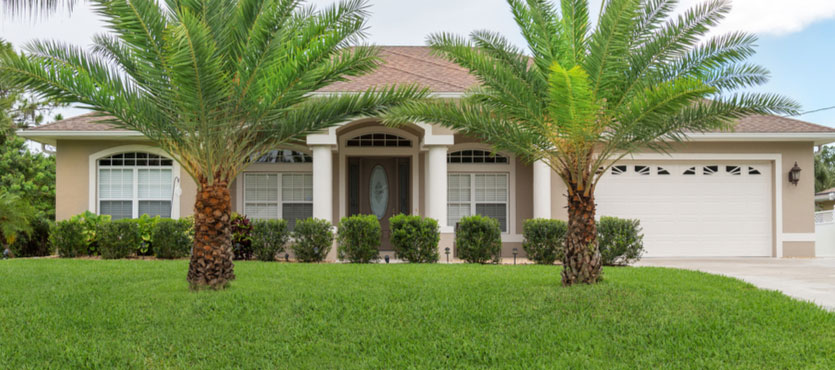Bahia Grass is a grass that is ideally suited to the sunny conditions here in South Florida. Bahia grass loves the sun and heat, while shunning cold and shady conditions which makes it a popular choice for southern coastal regions where the winters are mild. Bahia grass grows via stolons (rooty stems) which form thick grass coverage that can stand up to quite a bit of foot traffic. Due to its growth pattern it is less likely than other warm-weather grasses to aggressively spread into your garden’s landscaping. Bahia grass is also popular due to its drought tolerance, as well as the fact that it requires little care – not plagued by disease or pests and able to grow in less than optimal soil.
Planting and Growing Bahia Grass
With the promise of a beautifully green, low maintenance lawn, Bahia grass may be just what you want for your lawn. Bahia grass is planted by seed or sod. If you choose seed, always choose a quality seed and a broadcast spreader to avoid planting too much seed which will only produce weak grass plants. Argentine and Pensacola Bahia grass are popular choices with Argentine producing a deep green and Pensacola delivering a finer texture.
Once planted, Bahia grass will let you know when rainfall is coming up short and it needs to be watered by turning a bluish gray and looking wilted. When watering is called for you should deliver up to one inch of water, wetting the soil to a depth of eight inches.
Mowing and Maintaining Bahia Grass
Bahia grass blades require you keep your mower blade sharp to avoid tearing the grass. This means you need to sharpen your mower blade monthly during the growing season. Bahia grass typically requires mowing every one to two weeks from spring to fall with the goal to keep a height of three to four inches.
Bahia grass requires feeding with an iron containing lawn food two to four times annually beginning in the spring. Choose a 16-4-8 NPK lawn fertilizer and follow package directions for best results.
Dealing with Pests and Diseases
As promised, Bahia grass is not plagued by many diseases or pests. One of the most serious threats to your Bahia grass is the mole cricket, which tunnels underneath the soil, feeding on the grass shoots and damaging the grass roots. By bringing in mole cricket predators (the nematode Steinernema scapterisci or the wasp Larra) or using an approved bait or insecticide you can solve the problem mole crickets quickly.
Crabgrass, goose grass, sand bur, and crowfoot grass are common invaders in Bahia grass lawns but applying a pre-emergent herbicide in the winter before new growth emerges can effectively destroy these common weed pests. Applying a post-emergent herbicide will rid your Bahia grass lawn of broadleaf weeds like knotweed, lespedeza, and spurge, which are already in place. These herbicides should only be applied when your Bahia grass is healthy, and temperatures are in the 60 to 85 degree range.
As mentioned, Bahia grass will yellow when iron is deficient in your soil. If you notice yellowing your will want to apply a product with ferrous sulfate as directed by the label directions, continuing the application at six week intervals from spring through fall, the growing season.
The professionals at Xtreme Landscaping are ready to help you plant, grow, and care for your Bahia grass lawn year round. As experts, the team at Xtreme can handle any problem areas you face with your lawn and landscaping including Bahia grass issues.

